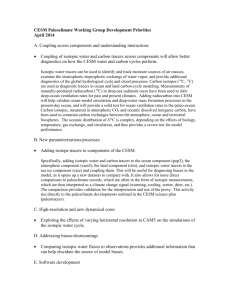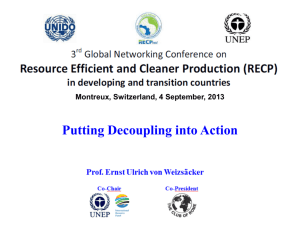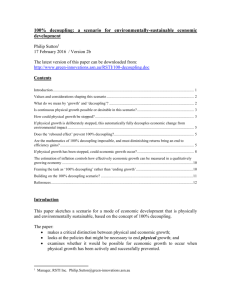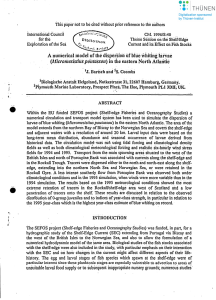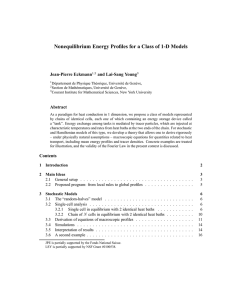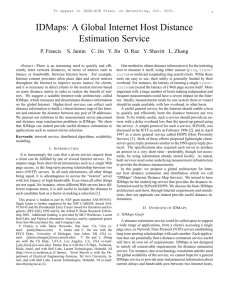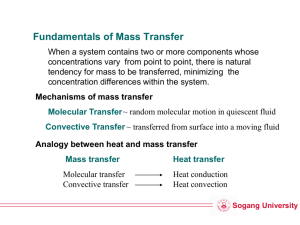abstracts
advertisement
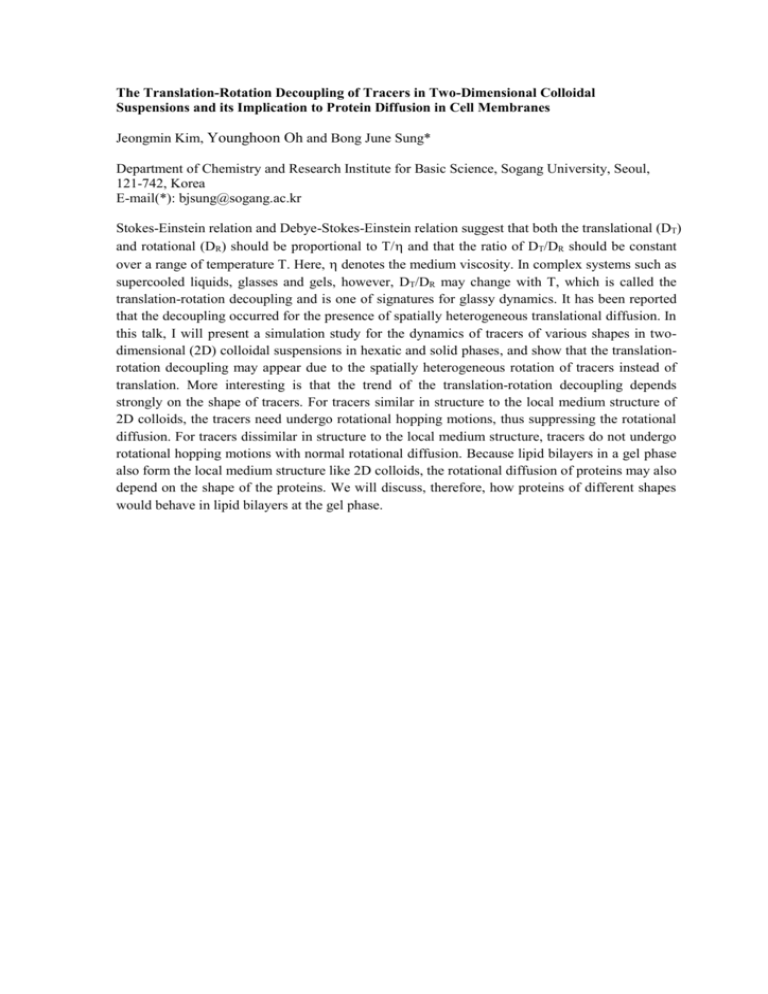
The Translation-Rotation Decoupling of Tracers in Two-Dimensional Colloidal Suspensions and its Implication to Protein Diffusion in Cell Membranes Jeongmin Kim, Younghoon Oh and Bong June Sung* Department of Chemistry and Research Institute for Basic Science, Sogang University, Seoul, 121-742, Korea E-mail(*): bjsung@sogang.ac.kr Stokes-Einstein relation and Debye-Stokes-Einstein relation suggest that both the translational (DT) and rotational (DR) should be proportional to T/ and that the ratio of DT/DR should be constant over a range of temperature T. Here, denotes the medium viscosity. In complex systems such as supercooled liquids, glasses and gels, however, DT/DR may change with T, which is called the translation-rotation decoupling and is one of signatures for glassy dynamics. It has been reported that the decoupling occurred for the presence of spatially heterogeneous translational diffusion. In this talk, I will present a simulation study for the dynamics of tracers of various shapes in twodimensional (2D) colloidal suspensions in hexatic and solid phases, and show that the translationrotation decoupling may appear due to the spatially heterogeneous rotation of tracers instead of translation. More interesting is that the trend of the translation-rotation decoupling depends strongly on the shape of tracers. For tracers similar in structure to the local medium structure of 2D colloids, the tracers need undergo rotational hopping motions, thus suppressing the rotational diffusion. For tracers dissimilar in structure to the local medium structure, tracers do not undergo rotational hopping motions with normal rotational diffusion. Because lipid bilayers in a gel phase also form the local medium structure like 2D colloids, the rotational diffusion of proteins may also depend on the shape of the proteins. We will discuss, therefore, how proteins of different shapes would behave in lipid bilayers at the gel phase.







